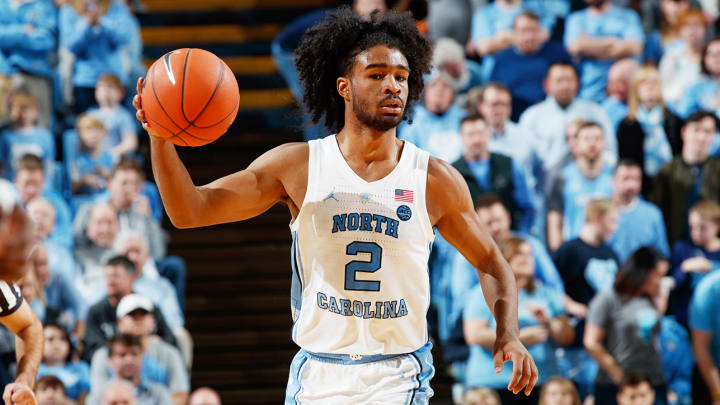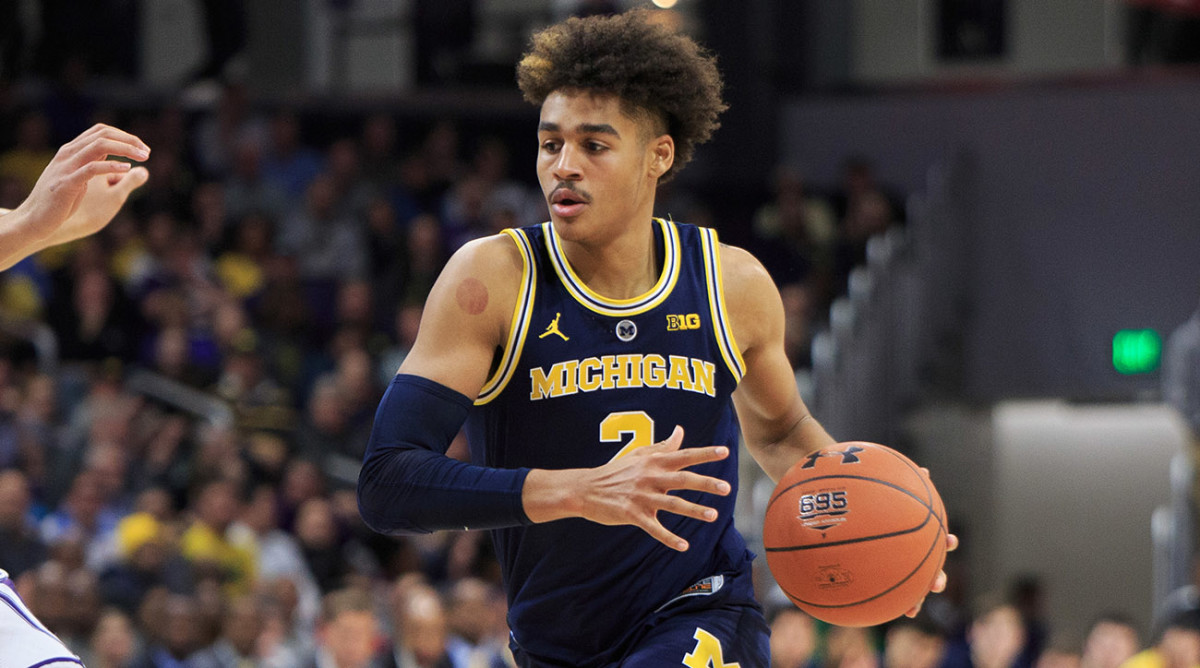Five NBA Prospects Whose Stock Could Rise During the 2019 NCAA Tournament

The thinking person’s approach to March, with respect to the NBA draft, should be not to get carried away—no matter how well or how poorly a player performs in a tournament setting, it’s still a stretch to pass judgment based off a small sample. Logic says the best thing to do is look at a prospect’s whole body of work. But although NBA teams by and large recognize this (or at least they should by now), the fact of the matter is that March always offers hopeful players a prominent platform to state their case. While teams do their best to see players over the course of the season and come to the table in June with a holistic evaluation of each prospect, conference tournaments, in particular, offer a degree of convenience that scouts can’t really get anywhere else. And, every year, there are a number of guys who create an opportunity with their play in a conference tournament or the big dance and run with it into the draft.
While we can always take a handful of games and put them in perspective from a pure evaluatory standpoint, it’s still important to recognize that while how a player fares over the next month may not impact our personal opinions or a team’s evaluation of that player whatsoever, it can still alter how that prospect views his own draft status. Making a decision to test the waters is sometimes all it takes. So while not every player will go full DeAndre Daniels or Mitch McGary, riding the strength of a hot tournament run into being overdrafted in June, it’s important to consider the possibilities. Here, we’ve highlighted five prospects who could alter the shape of the draft with strong play.

The Potential Star Turn: Coby White, North Carolina
Things have been oddly quiet in Chapel Hill this season, partially because Duke has hogged headlines, but North Carolina has figured a lot of things out in conference play and look the part as a Final Four-caliber team. Lately, their main catalyst has been White, who as their lead ballhandler and most potent scorer is positioned to be the chief beneficiary if the Tar Heels keep rolling. While this is not to suggest that White is any sort of unknown quantity—NBA teams have been tracking the freshman closely since the fall—it’s probably fair to say that he hasn’t quite gotten his due nationally.
There remains some difference of opinion among NBA scouts as to whether White or the more touted but less impactful Nassir Little is North Carolina’s best long-term prospect, but the fact that this is a legitimate conversation being had speaks to the type of skills White has been flashing. At 6’5” with a good build, some sneaky explosiveness and a clean, potent three-point shot, he profiles as a strong fit within a positionless system. He’s a natural shooting guard still learning to play the point, and that’s led to some growing pains. Still, White has shown some improvement as a decision-maker and has the tools to be effective with or without the ball long-term. With positional versatility and shooting often coming at a premium in the NBA, it matters less that White will never be a true pass-first guard, and more that he has a chance to be a high-level perimeter threat as he matures.
If North Carolina is going to make a real run in March, they’ll need White to keep performing, and he’ll have a big opportunity to further establish that he belongs in the lottery conversation. Opponents will be keying on him with ball pressure and trying to run him off the three-point line, but if he continues to knock down deep shots and limit mistakes, he’ll affirm the distinct strengths that make him an appealing selection. Everyone has seen him plenty, and the tournament shouldn’t necessarily make or break him, but it’s a great opportunity for White to set himself apart. With each big performance, it’s become increasingly clear that White is a lottery-level talent in this class, and he can certainly further that notion over the next few weeks.
The Midseason Surprise: Ochai Agbaji, Kansas
One of the stranger stories in college basketball this season has been Agbaji’s emergence as Kansas’s best long-term prospect. This only became clear after the Jayhawks pulled his redshirt, which only happened because Udoka Azubuike was injured and Silvio De Sousa remained suspended, forcing KU to deploy smaller lineups. Then Lagerald Vick took a leave from the team, thrusting Agbaji into a larger share of minutes. He’s acclimated pretty quickly as a true freshman, and against all odds, has already established himself as a draftable prospect.
Although Agbaji’s unique situation would seem to point toward 2020 as his likely entry point into the draft, at this stage of the season teams have to operate with every outcome in mind. While the sample size is small, Agbaji’s physical profile, toughness, ability to defend multiple positions on the perimeter and what looks like a passable set jumper are all things he can hang his hat on immediately. He’s an indispensable part of Kansas’ setup now, and has demanded scouts’ attention, particularly with Quentin Grimes having underwhelmed for the majority of the season and Devon Dotson viewed as a multi-year college prospect. For a late-blooming three-star recruit, he has surpassed all expectations.
Agbaji has told reporters he plans to return to Kansas, but it’s entirely possible that his skill set could garner interest in the late first round if he were to at least test the waters and feel things out. Given that he didn’t make his debut until Jan. 9, there will be decision-makers at the Big 12 tournament and beyond who haven’t seen Kansas since the fall. As history has proven, sometimes the less teams have seen of a prospect, the better for his stock, and March is a chance for Agbaji to leave a real impression. He may not end up in this draft at all, but he’s a clear person of interest going forward.
The Long-Term Flier: Neemias Queta, Utah State
We discussed Queta back in January as a mid-major player with a legit NBA opportunity in front of him, and as the Portuguese freshman has continued to impress, the possibility of him testing the waters and ending up in this year’s draft has become a real one. Utah State has rolled through the Mountain West, and Queta’s ability to alter shots and move his feet has given them a legitimate defensive backbone. With a reported 7’5” wingspan and 9’6” standing reach, he should have extremely obvious appeal to teams hoping to develop a rim protector. With that type of profile and the impact he’s had, it’s not crazy to think Queta would warrant a late first-round dart throw from a team hoping to develop a center who can legitimately add a defensive dimension at some point in his rookie contract.
Queta has the same warts as many young shot-blockers—he’s foul-prone, can get pushed around a bit inside and is still learning what he can get away with. He’s clearly not at a point where he’d help an NBA team immediately. But from a pure tools standpoint, he’s somewhere near the top of this year’s group of centers. The hope would be that he can play a vertical spacing role and alter shots off the bench, which is not all that far-fetched. Many NBA decision-makers will get their first in-person look at the Mountain West Tournament in Vegas, which will be a logical jump-off point for Queta to build some buzz. For a guy like him who hasn’t been as visible, the next few weeks are especially key.

The X-Factor: Jordan Poole, Michigan
While Michigan has tailed off a little bit since a dominant start to the season, they are still a team nobody will want to face in the tournament. As a defensively brilliant team that sometimes struggles to score the ball, Poole’s perimeter play has been a major swing factor in their success. Dating back to last season as a bit player, the sophomore has generally been pegged as someone who is talented enough to force the NBA’s hand, but he’s also frustrated scouts with his habitual inconsistency.
He’s hitting 38% of his threes, but Poole’s big breakout hasn’t quite happened this season. He’s a bit of an incomplete picture, functioning almost entirely in catch-and-shoot and sometimes looking uncomfortable playing off the bounce. But he has the type of athletic build that projects well defensively, and the sort of skill set where you can see him succeeding in the right role long-term if he keeps working at it. He’s the third banana to Charles Matthews and Ignas Brazdeikis, but Poole has enough going for him that a hot shooting string of games might be enough to move the needle this year. He’s gifted enough that it’s easy to see a team taking the plunge, and this month will be his chance to press the issue.
The Super Sleeper: Tyrese Haliburton, Iowa State
Although Haliburton is another player who seems like a better bet for the 2020 draft, the unheralded freshman has become a serious person of interest for NBA teams. The possibility of a productive March remains on the table, and as we’ve written dating back to January, Haliburton should at least be in good position to test the draft and get feedback. His case is certainly a strange one, as his scoring contributions and overall shot diversity have been minimal, but his brilliant feel for basketball is extremely evident and is something that has to be experienced over the course of a full game to properly comprehend. It will be hard for Haliburton to be a first-round pick while averaging less than 10 points per game, plus the fact he needs to get much stronger and he shoots a funky shot, but it can’t be stressed enough how impressive he’s been from a feel standpoint all season.
Haliburton’s pathway to going one-and-done may be inherently paradoxical, although frankly, he’s good enough that there should be no guilt discussing it—while NBA teams would undoubtedly love to see more of what he can do as a scorer and ball-handler, one of his strengths is how unselfishly he’s fit into Iowa State’s system (he had a remarkable 17-assist game early in the season), which generally features four ballhandlers at a time. In other words, it’s unlikely he breaks from what makes him so good to showcase other elements of his game that could turn more heads. But Iowa State does want him to shoot the ball more frequently, and he’s certainly capable of doing more from an individual perspective. Part of the beauty of the way he plays is how often he makes the correct choice to facilitate instead.
The prevailing thought is that returning to school would let him spend most of his time at point guard, thus creating a huge window for him to make a case as a first-round pick in 2020. Still, there are some (myself included) who already view him as a first-round talent, and stranger things have happened. He’s a player to watch closely, just in case.
